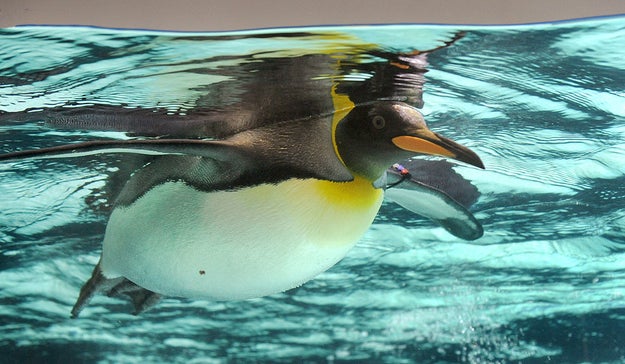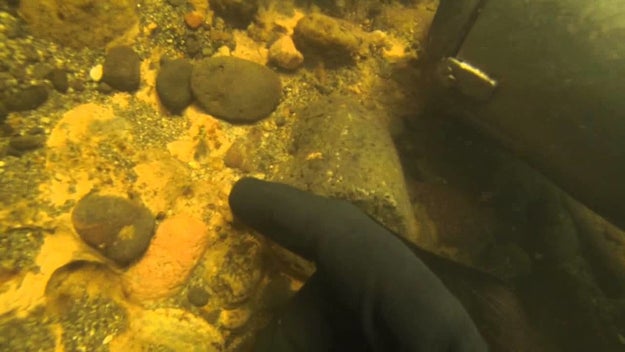1. The Pineapple Express is a real thing. It’s a narrow region of atmospheric moisture that builds up in the tropical Pacific.
Via oceanservice.noaa.gov
3. Penguins can swim as fast as 25 miles per hour underwater.

William West / AFP / Getty Images
4. Our planet’s oceans hold about 20 million tons of gold.

Via youtube.com
5. If all the gold in the ocean was mined, there would be enough to give each person on Earth nine pounds.

Bryan Bedder / Getty Images
6. This is a drawing of John Lethbridge’s diving machine. It was the first “scuba suit,” created around 1710.

diving.ie
7. Divers that travel one hundred feet underwater experience nitrogen narcosis, an effect that makes them feel drunk.
8. It takes about one thousand years for water to travel around the entire planet.

abc.net.au
9. If all the ice found in glaciers and ice sheets melted, then the sea level would rise by roughly 262 feet (80m). That’s as tall as a 26-story building.

Mario Tama / Getty Images
10. With a heart about the size of a car, the blue whale is the largest creature to ever exist on the planet.

Via wwf.panda.org
11. More than 3.5 billion people depend on the oceans for food. In 20 years, experts say that number could go all the way up to seven billion.

Eric Piermont / AFP / Getty Images
12. Ever swallow seawater? Then chances are you’re ingesting tens of thousands of zooplankton, which are tiny little ocean bugs.

Yasuyoshi Chiba / AFP / Getty Images
13. The pressure at the deepest point of the ocean is just as heavy as one person trying to lift 50 jumbo jets.
Comedy Central / Via giphy.com
14. Antarctica has as just as much ice as the Atlantic Ocean has water.

Eitan Abramovich / AFP / Getty Images
15. A lot of deep-sea fish have both male and female sex organs. And some of them even have the ability to change their sex organs during their lifetimes.

Dan Kitwood / Getty Images
16. Nearly ninety-percent of volcano eruptions happen underwater.
Discovery Channel / Via giphy.com
“In the ’90s scientists discovered the largest known concentration of active volcanoes in the South Pacific Ocean. The area they discovered is roughly the size of New York state, It has 1,133 volcanic cones and seamounts. The scientists said that two or three could erupt at any moment.” —Smithsonian Ocean Planet
17. Seventy-percent of the oxygen we breathe on land is a by-product of the oceans.
YouTube / Via youtube.com
18. The sharks we know of today are tiny compared to their ancient shark ancestors. The Giant Megatooth shark was large enough to eat a whale.

Mary Parrish/Smithsonian Institution / Via ocean.si.edu
19. The Monterey Bay Submarine Canyon is deeper and larger than the Grand Canyon.
Google Maps, David Fierstein (c) 2000 MBARI / Via mbari.org
Credits: Kevin smith



No comments:
Post a Comment